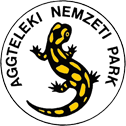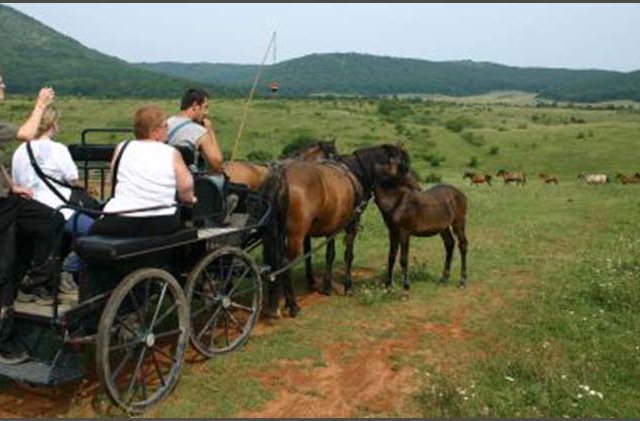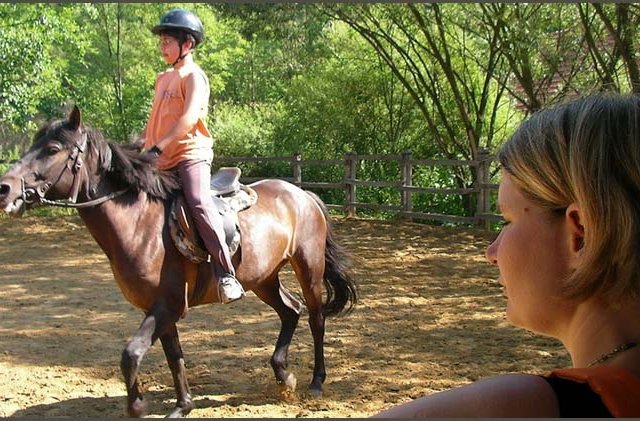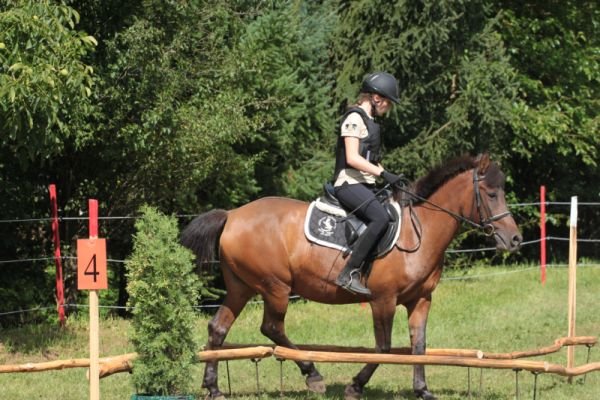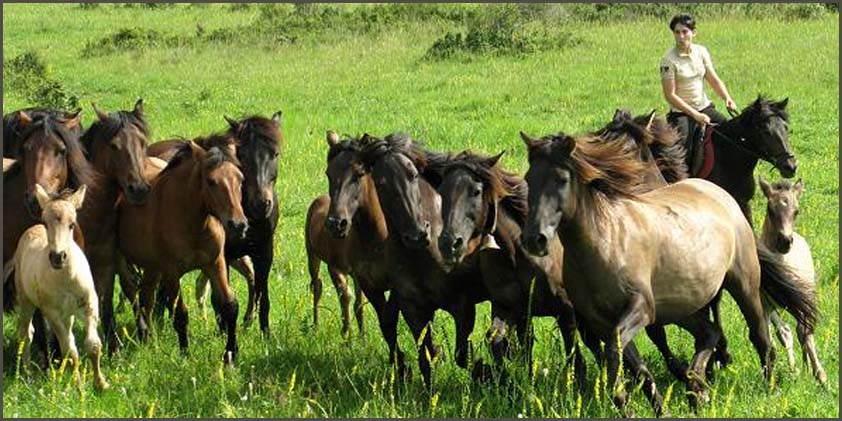
The hucul horse
Genetically, huculs are the breed closest to those horses used by the tribes (Avars, Székelys, etc.) which inhabited the Carpathian Basin before the Hungarian Conquest in the 9th century. Since that time huculs gradually got outnumbered in herds by other breeds - for example horses similar to the Akhal-Tekes of Turkmenistan - and over the course of centuries today’s indigenous species were arrived at using other foreign breeds. However, a number of huculs survived this period in the most closed-off parts of Carpathians without any crossbreeding. This period of natural selection developed the hucul into a hardy, small horse suited to rough and hilly terrain. Today, its sure-footedness and ability to work and carry loads over difficult terrain is prized over many other breeds, and the hucul’s appearance has changed little from that of the ancient wild horse it once was.
Our hucul stud
After 1919, the Austro-Hungarian monarchy’s central stud was distributed among the newly formed neighbouring states and following World War II hucul breeding was largely neglected. From 1970, the Director of Budapest Zoo and Botanical Garden, Dr. Csaba Anghy, gathered the remaining thoroughbred huculs, of which 10 mares were received by the Aggtelek National Park Directorate in 1986, and breeding in Hungary resumed using these horses and several specimens from abroad.
Mares and their foals can be found near Jósvafő living semi-wild 1.5km north of the village at the stud at Gergés-lápa. The horses are bred here and roam freely on 300 hectares of pasture, spending the night in an open fold. There are about 130 currently in the pasture, with 50 stallions in nearby Perkupa, and another group kept neat Színpetri.
At the main breeding stud in Jósvafő our most important job is the conservation of this ancient breed’s gene stock. Horses are carefully selected for breeding in order to raise healthy foals, which are examined around three years of age.
At the stables in Jósvafő, stallions and mares are trained. Those with the right qualities are trained to pull a carriage and to remain placid around children, while stallions are trained to tackle C category paths. Thorough examination ensures that a horse is fit for use by children and used to daily attendance by the grooms. Accomplished mares are prepared for competiton either as coach horses or for dressage while any unreliable horses are singled out from the main breed.
Riding camps
The Jósvafő hucul stud runs children’s riding camps in the Aggtelek National Park in spring, summer and autumn. Not only are participants able to ride, they also get an insight into the life of the stud farm and learn about the horses’ treatment and care.
At the camps, young riders can gain experience on the small horses, riding them on the lead or in classes. Advanced riders can ride cross-country and participate in Huculpath events.
As a complementary programme in the afternoons, children get acquainted with some of the attractions of the park, including Baradla Cave, Szádvár castle ruins and coach riding in Jósvafő. With the help of National Park staff, children can also take part in handicraft workshops, examine the aquatic life in the Jósva stream with a microscope or watch other curiosities of the natural world, not forgetting the treasure hunt quiz at the end of the camp!
Participant numbers of between 6 and 16 children between the ages of 8 and 16 is typical. Accommodation, according to season, is available either in log cabins or in the Tourist Hostel at Aggtelek’s Baradla campsite. Restaurant meals are provided..jpg)
